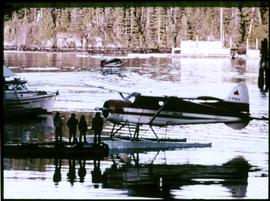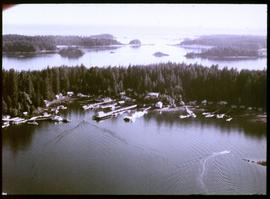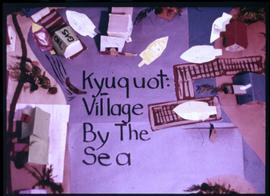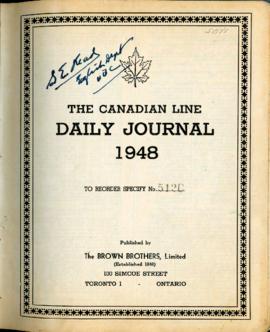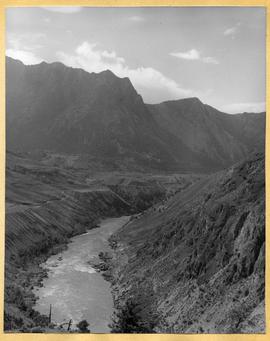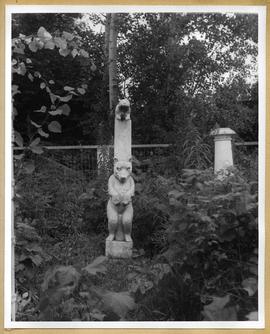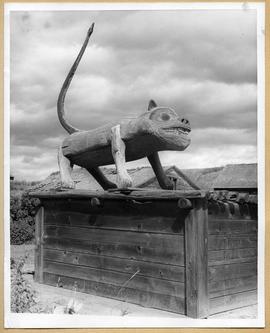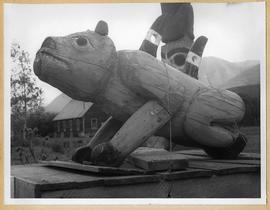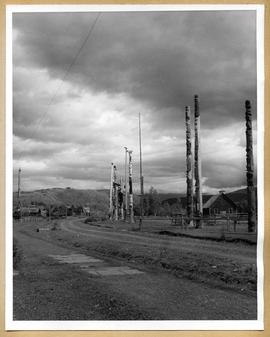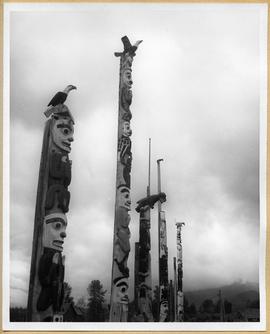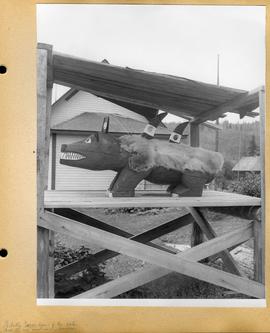- 148-02-a035786
- Item
- 1975 or 1976
An image showing people standing on a dock next a to a sea plane with a boat nearby. Another plane in taking off in the background. According to the documentation included with the filmstrip, the description of the image states "Waiting for the afternoon scheduled flight of a "Beaver" float plane. Float planes come in twice a day (weather permitting) and bring passengers, freight, and mail."

